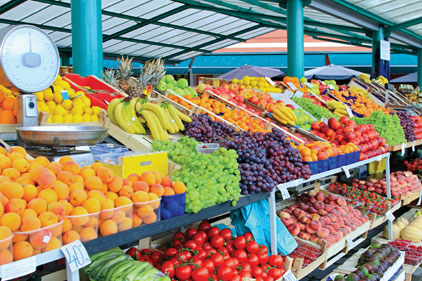A new study looked at citrus fruit for the first time, rather than a range of fruit and vegetables which have been linked to stroke protection. The study involved thousands of women taking part in the ongoing Nurses’ Health Study in the U.S., but experts believe the benefits may also apply to men.
Every year in the U.K., approximately 120,000 people have a stroke and 20-30% die within a month, while 300,000 people are living with disabilities as a result.
A research team based at Norwich Medical School in the University of East Anglia investigated the strength of protection from flavonoids, a class of antioxidant compounds present in fruits, vegetables, dark chocolate and red wine.
The study used 14 years of follow-up data provided by 69,622 women who reported their food intake, including details on fruit and vegetable consumption every four years.
The research team examined the relationship of the six main subclasses of flavonoids -- flavanones, anthocyanins, flavan-3-ols, flavonoid polymers, flavonols and flavones -- with risk of ischemic, hemorrhagic and total stroke.
The researchers did not find a beneficial association between total flavonoid consumption and stroke risk, as the biological activity of the sub-classes differ. However, women who ate high amounts of flavanones in citrus had a 19% lower risk of blood clot-related (ischemic) stroke than women who consumed the least amounts.
The highest level of flavanones was around 45mg a day compared with 20mg a day. A glass of commercial orange juice can provide 20-50mg depending on processing and storage conditions.
In the study, reported in the medical journal Stroke flavanones came primarily from oranges and orange juice (82%) and grapefruit and grapefruit juice (14%).
However, researchers recommended that consumers wanting to increase their citrus fruit intake should eat more whole fruit rather than juice, due to the high sugar content of commercial fruit juices.
Lead researcher Aedin Cassidy, proessor of nutrition, said, “Studies have shown higher fruit, vegetable and specifically vitamin C intake is associated with reduced stroke risk.
“Flavonoids are thought to provide some of that protection through several mechanisms, including improved blood vessel function and an anti-inflammatory effect.”
A previous study found that citrus fruit and juice intake, but not intake of other fruits, protected against risk of ischemic stroke and intracerebral hemorrhage.
Another study found no association between yellow and orange fruits and stroke risk, but did link increased consumption of white fruits like apples and pears with lower stroke risk.
An additional study found that Swedish women who ate the highest levels of antioxidants -- about 50% from fruits and vegetables -- had fewer strokes than those with lower antioxidant levels.
More studies are needed to confirm the association between flavanone consumption and stroke risk, and to gain a better understanding about why the association occurs, said Cassidy.
Dr. Sharlin Ahmed, research liaison officer at The Stroke Association, said, “We all know that eating plenty of fresh fruit and veg is good for our health. This study suggests that eating citrus fruits in particular, such as oranges and grapefruits, which are high in vitamin C could help to lower your stroke risk.
“However, this should not deter people from eating other types of fruit and vegetables as they all have health benefits and remain an important part of a staple diet. More research is needed in this area to help us understand the possible reasons why citrus fruits could help to keep your stroke risk down.
“Everyone can reduce their risk of stroke by eating a healthy balanced diet that is low in saturated fat and salt, exercising regularly and ensuring that your blood pressure is checked and kept under control.”
From the February 27, 2012, Prepared Foods' Daily News.



